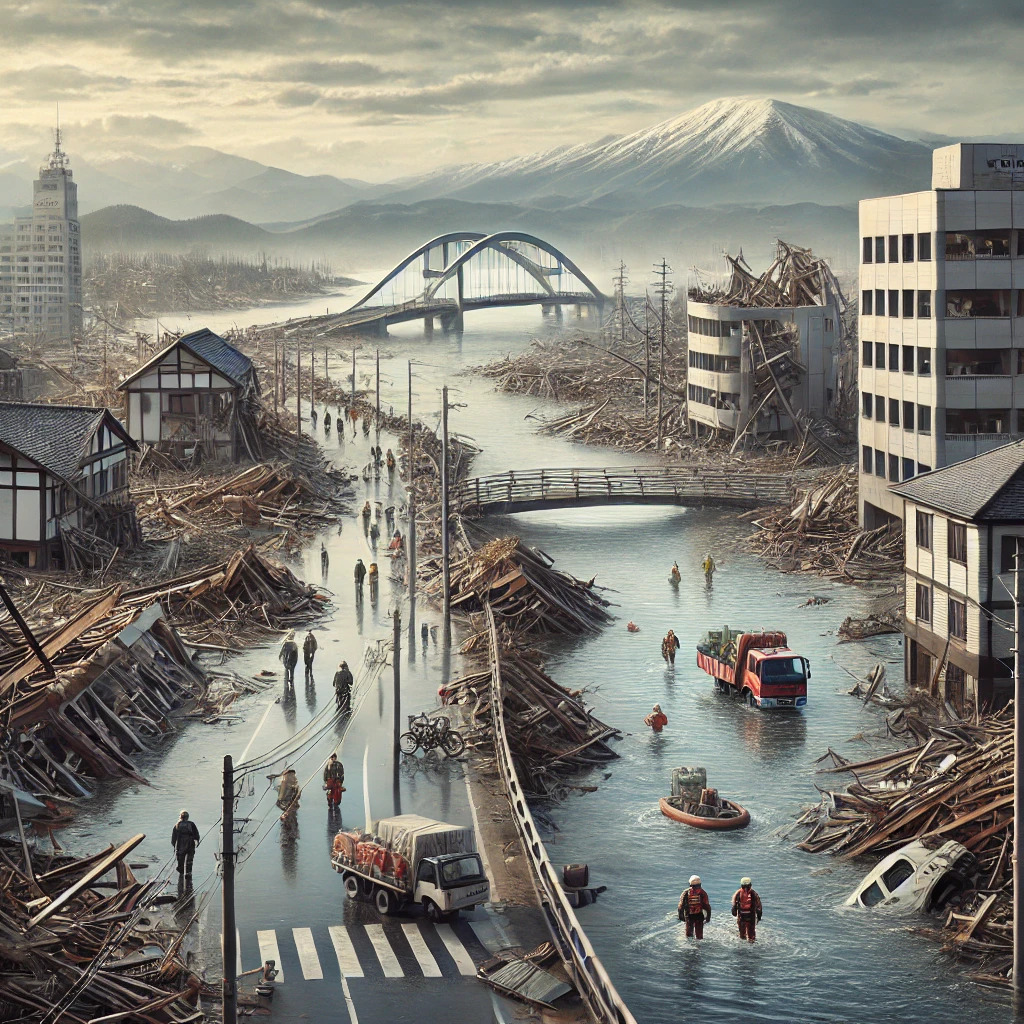On March 11, 2011, Japan was struck by the Tohoku earthquake, one of the most powerful earthquakes ever recorded, followed by a devastating tsunami. This disaster, which took over 15,000 lives and caused extensive destruction, showcased Japan’s vulnerability to natural disasters but also highlighted the resilience, preparedness, and unity of the Japanese people in the face of unimaginable hardship.
The Earthquake and Tsunami
The 9.1-magnitude Tohoku earthquake occurred off the northeastern coast of Japan, triggering a massive tsunami that sent waves as high as 40 meters (131 feet) toward the coastline. Coastal cities and towns were inundated within minutes, destroying homes, roads, and infrastructure. The tsunami traveled several miles inland, sweeping away everything in its path and displacing hundreds of thousands of people.
Impact on Communities and Infrastructure
Entire communities in the Tohoku region were wiped out, and millions were left without electricity, clean water, and shelter. Critical infrastructure, including roads, railways, and communication systems, was heavily damaged, making rescue operations difficult. The disaster also led to the Fukushima Daiichi nuclear power plant accident, which forced widespread evacuations and left lasting concerns about nuclear safety.
Japan’s Humanitarian Response
In the aftermath of the Tohoku earthquake, Japan launched one of its largest humanitarian responses. Rescue teams, volunteers, and international support poured in, working tirelessly to provide food, shelter, medical aid, and psychological support to survivors. The government and various non-governmental organizations coordinated efforts to ensure that those affected received the necessary help to rebuild their lives.
The Spirit of Resilience and Recovery
Despite the challenges, Japan’s people demonstrated remarkable resilience. Many affected communities united to begin the painstaking process of recovery and rebuilding, with a strong commitment to honor those lost by restoring their towns. Japan has since invested in advanced tsunami warning systems, earthquake-resistant buildings, and evacuation planning to reduce the risk and impact of future disasters.
Long-Term Impact and Global Lessons
The Tohoku disaster underscored the importance of preparedness, leading to significant advancements in disaster response both in Japan and globally. It reinforced the need for countries to prioritize resilient infrastructure, efficient emergency response, and community education on earthquake preparedness.
Conclusion
The Tohoku earthquake and tsunami of 2011 remain a testament to both nature’s power and human resilience. The disaster reshaped Japan’s approach to disaster management and highlighted the strength of its people, inspiring the world to learn from their response and recovery efforts.

